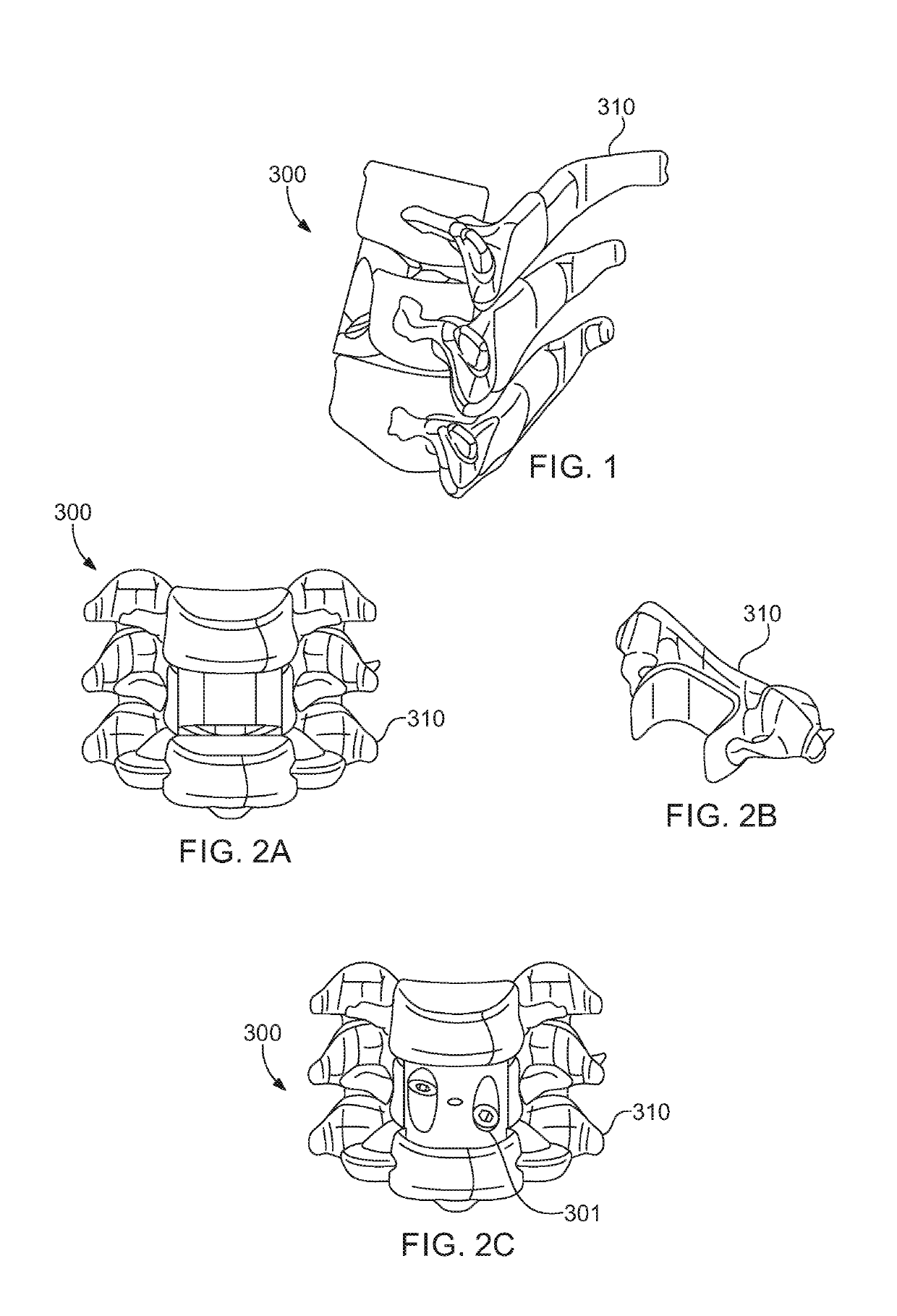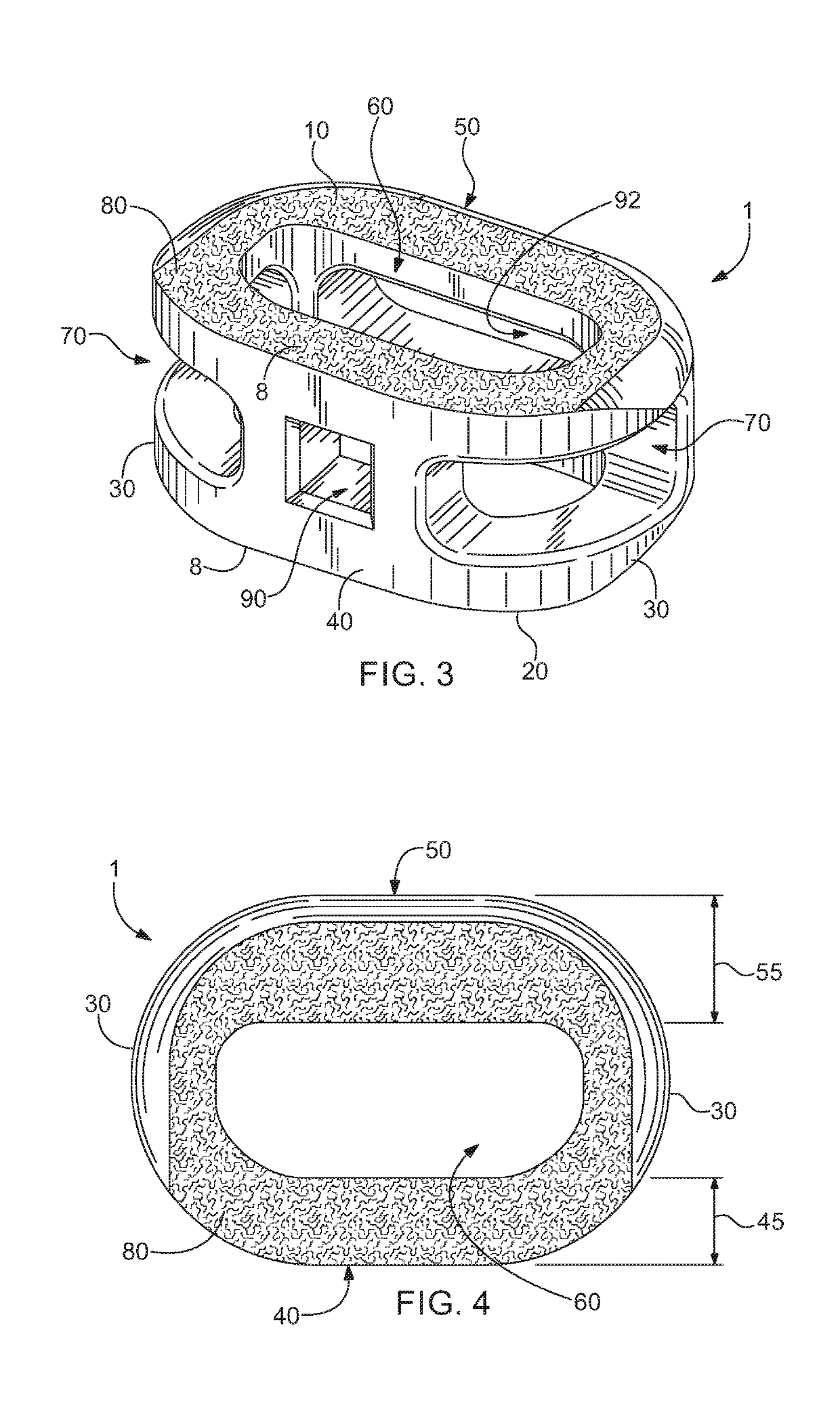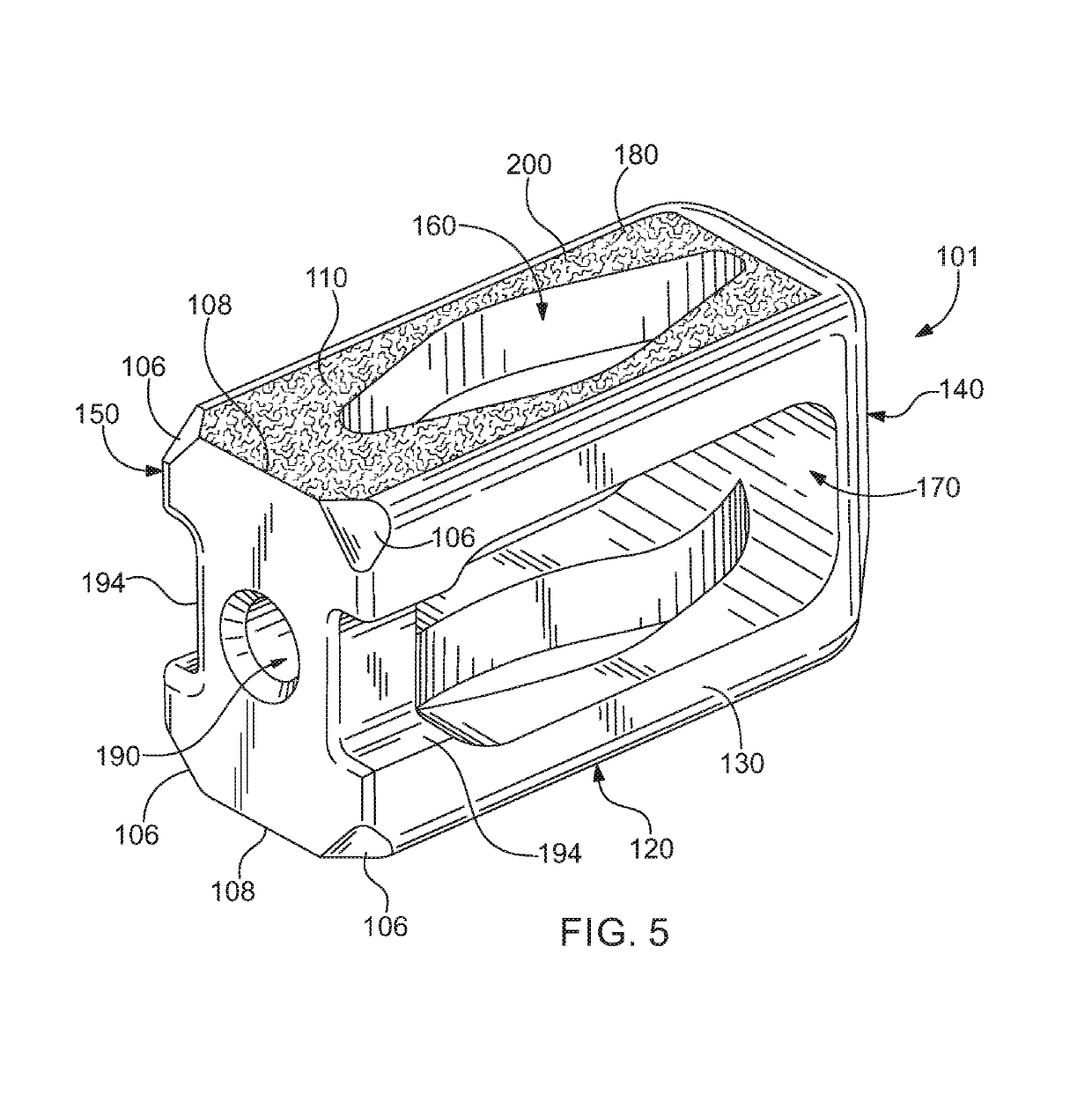Modular adjustable corpectomy cage
a module-based, adjustable technology, applied in the field of interbody spinal implants, can solve the problems of lack of proper biomechanical support, deformation, deformation of the vertebrae and discs, loss of structural integrity,
- Summary
- Abstract
- Description
- Claims
- Application Information
AI Technical Summary
Benefits of technology
Problems solved by technology
Method used
Image
Examples
Embodiment Construction
[0058]Various terms relating to aspects of the present disclosure are used throughout the specification and claims. Such terms are to be given their ordinary meaning in the art unless otherwise indicated. Other specifically defined terms are to be construed in a manner consistent with the definition provided in this document.
[0059]As used throughout, the singular forms “a,”“an,” and “the” include plural referents unless expressly stated otherwise. A “patient” may be any animal, including mammals such as companion animals, laboratory animals, and non-human primates. Human beings are preferred. A functional spinal unit includes a vertebrae and the intervertebral discs between a superior and inferior vertebrae. A functional spinal unit may include a cervical functional spinal unit, a thoracic functional spinal unit, or a lumbar functional spinal unit.
[0060]Referring now to the drawing, in which like reference numbers refer to like elements throughout the various figures that comprise t...
PUM
 Login to View More
Login to View More Abstract
Description
Claims
Application Information
 Login to View More
Login to View More - R&D
- Intellectual Property
- Life Sciences
- Materials
- Tech Scout
- Unparalleled Data Quality
- Higher Quality Content
- 60% Fewer Hallucinations
Browse by: Latest US Patents, China's latest patents, Technical Efficacy Thesaurus, Application Domain, Technology Topic, Popular Technical Reports.
© 2025 PatSnap. All rights reserved.Legal|Privacy policy|Modern Slavery Act Transparency Statement|Sitemap|About US| Contact US: help@patsnap.com



